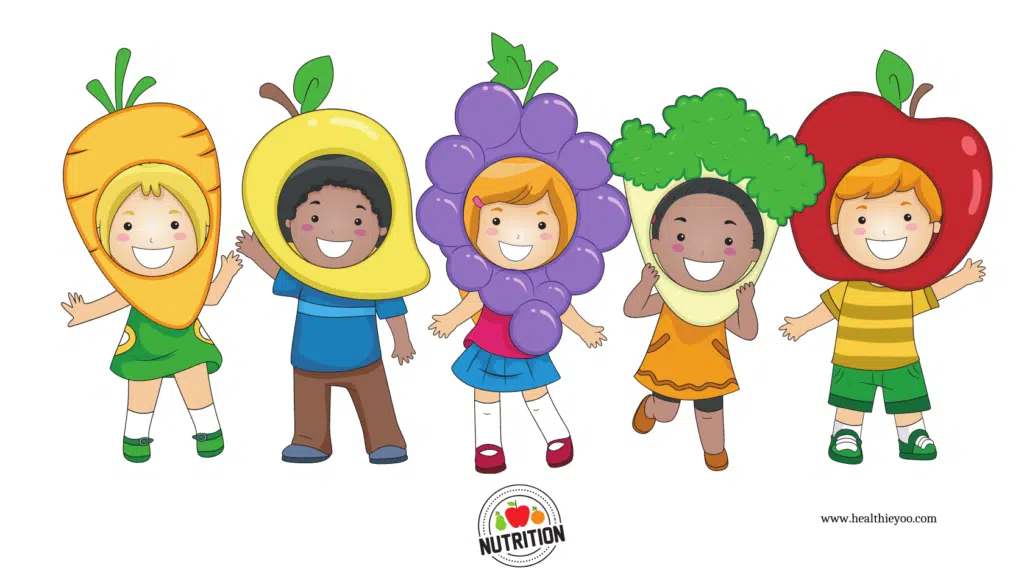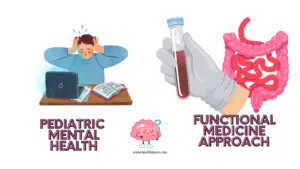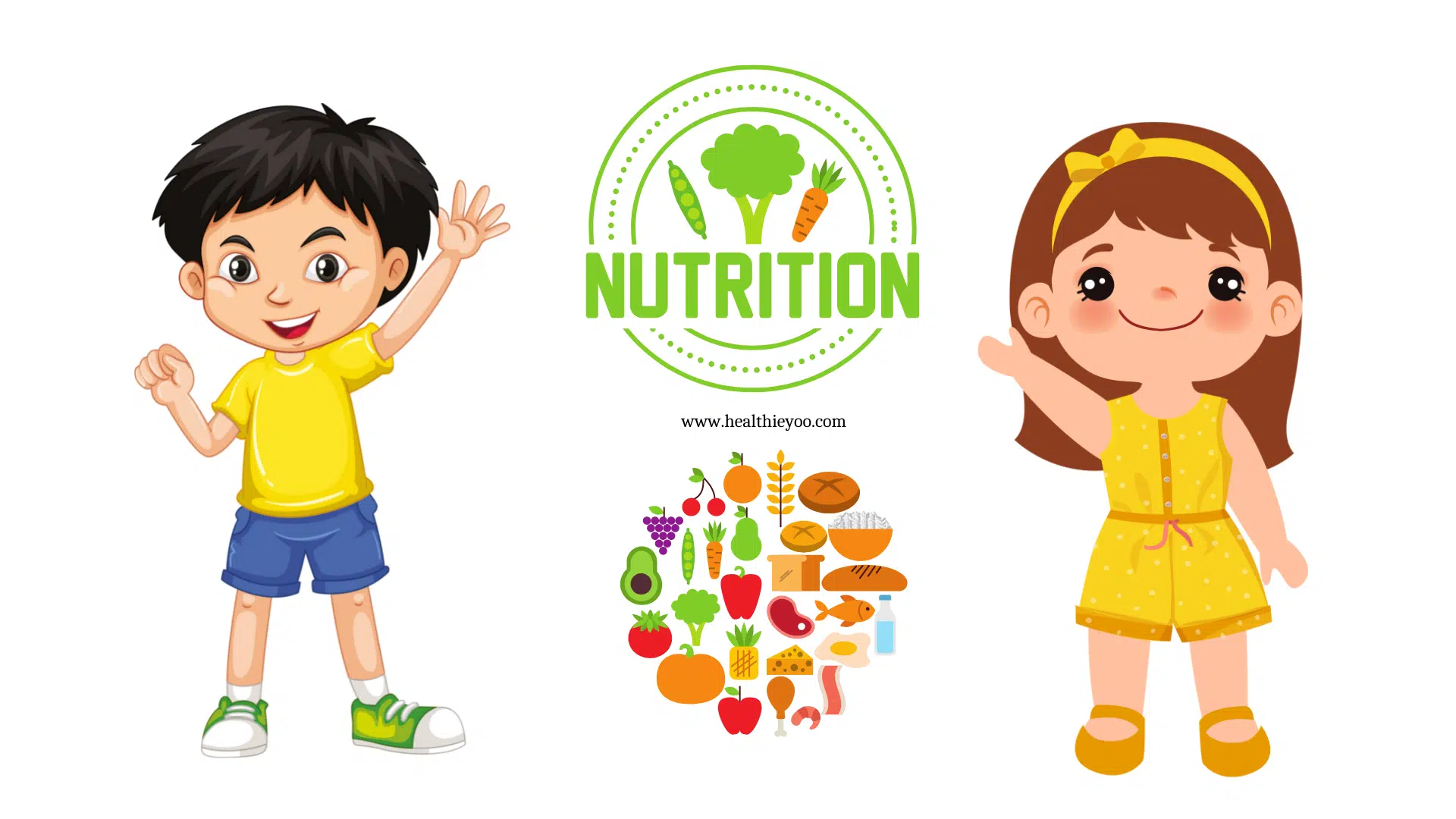Childhood begins after infancy & lasts until puberty. Physical & mental growth plays an important role in their developing years. If the child is malnourished then it becomes crucial for catch-up growth. Though growth is steady in this age group, nutrition plays an important role as it is a base for adolescents. Although children are able to eat small quantities of food, their nutritional needs are higher. Meals for kids need to be designed smartly so that they are packed with nutrients even though they have low appetites. Understand the importance of nutrition and give your child the best start in life by providing good nutrition. Early eating habits can have an impact on how we eat as we age. Here is the importance of nutrition and nutritional needs for children and kids’ little tummies and healthy diet ideas and tips for moms.
*Nutritional requirements also differ as per Nationality. In this article Indian children are taken into consideration*
Energy
Energy needs for children who are physically active are higher than their sedentary counterparts. Requirement for energy increases as they grow. Remember, children have small stomachs, and it’s essential to provide them with nutrient-dense foods in appropriate portions to ensure they get the nourishment they need to grow and develop. One should avoid overfeeding or forcing the child to complete their plate as it results in a negative relationship with food. Overfeeding can lead to obesity later in their life.
Carbohydrates
Understand the importance of nutrition. Carbohydrates provide energy for growth, and activity & are building blocks for body functions. Carbohydrates also spare protein for building new tissues. Include complex carbohydrates such as whole wheat flour, daliya, jowar, ragi, samai millet, bajra, etc. One can also use ARF (Amylase Rich Flour) as they increase the nutritional content. Include seasonal fruits, dry fruits & variety of veggies. Limit intake of sweets, sugar, candies, and maida products in children as excess consumption can lead to dental carries.
Tips for moms to include healthy carbohydrates:
1) For major meals, include various items like whole wheat roti, mixed vegetable paratha, jowar rotla, bajra rotla, nachni porridge/ ARF sattva, rava idlis, ragi dosa, rava appe, rajgeera upma, etc.
2) For snacks, you can include fruits, vegetable sticks with dip, jowar puffs, churma ladoo made with jaggery, whole wheat khakhra, churi, etc.
3) You can enhance your child’s fiber intake by including whole grains, millet, fruits, and veggies in your family’s diet.
Proteins
Proteins help build, maintain & repair new tissues. It also plays an important role to form antibodies, hormones & enzymes. Vegetarians can consume dals, pulses, milk & milk products. Non-Vegetarian sources include eggs, fish & chicken.
Alterations in growth & development are seen when protein is inadequate. Susceptibility to infection is seen when protein is inadequate. Protein is extremely important and we must understand the importance of proper nutrition for child’s growth.
Tip for moms to include protein in children’s diet
Include curd, buttermilk, sprouts tikki, masala chana chaat, milkshake, besan chilla/ dal chillas, kheer, egg omlette, pan-roasted fish, etc.
Fats
Fats are caloric & energy dense. It helps in the absorption of fat-soluble vitamins like A, D, E & K. Essential fatty acids are required for healthy hair & skin & also for brain function. Include Omega-3 fatty acids such as flaxseeds, walnuts, garden cress seeds, salmon, and hilsa. Children can enjoy til-gud ladoo, peanut chikki, mix-seed bar, trail mix, etc.
Avoid/ limit intake of bad fats as they are found in processed foods; bakery products like Khari, toast, biscuits, pastry, cakes, and cookies; dalda, margarine, red meat, spreads like mayo, sandwich spreads, chipotle sauces, etc. Avoid/ limit intake of fried foods.
Vitamins and Minerals
Vitamins and minerals are required for normal growth & development. The importance of nutrition can be evident from the fact that insufficient intake can lead to nutritional deficiencies & impaired growth.
Iron
1-3 yrs | 8 mg/d |
4-6 yrs | 11mg/d |
7-9 yrs | 15mg/d |
Common symptoms of iron deficiency are feeling tired, irritable, pale skin & eyes, spoon-shaped nails, and malabsorption of food.
Iron deficiency anemia, which can hinder growth, is a risk for kids between the ages of 1 and 3 years old. A rise in hemoglobin and total iron mass is a hallmark of the infant stage’s rapid growth.
Children who are prolonged bottle-fed are at risk for iron insufficiency, according to data from the National Health and Nutrition Examination Survey (NHANES) (Cde, 2017).
Deworming & intake of iron-rich foods helps to reduce the chances of anemia.
Non-Vegetarian sources are better absorbed than vegetarian options. Some of the iron-rich sources for vegetarians include Halim seeds, dates, green leafy vegetables, and drumstick leaves.
To increase better absorption of iron one can include Vitamin C-rich sources like lemon, guava, raw cabbage, and citrus fruits.
Zinc
Zinc is essential for growth & development, immunity & neurological functions. Pica (Consuming non-food substances like chalk, mud, hair, rubber, etc.) & picky eating is associated with zinc deficiency.
Sources for zinc are whole wheat flakes, oysters, oats, watermelon seeds, beef steak, hemp seeds, white onion, oyster mushrooms, etc.
The requirement for zinc in children is:
1-3 yrs | 3.3 mg/d |
4-6 yrs | 4.5 mg/d |
7-9 yrs | 5.9 mg/d |
Calcium
Calcium is required for adequate mineralization and bone growth in children. Calcium deficiency can be one of the reasons for stunting in children. The actual requirement is determined by individual absorption rates and dietary factors such as protein, vitamin D, and phosphorus levels (Cde, 2017).
The requirement for calcium in children is:
1-3 yrs | 500 mg/d |
4-6 yrs | 550 mg/d |
7-9 yrs | 650 mg/d |
Ways to add calcium in kids’ diet if they do not like milk
If your child does not like milk, include milkshakes, and smoothies that they like. Also include other sources like ragi bhakhri or ragi ladoo, sprinkle sesame seeds (til) on rotis & salads, and include curd, and paneer in the child’s diet. Mothers can add cheese once or twice a week.
Vitamin D
Vitamin D is needed for calcium absorption and deposition of calcium in the bones. The requirement for Vitamin D is 600 IU/d. Sunlight is the freely available source of Vitamin D. Vitamin D is better absorbed between 11:00 am-2:00 pm. One needs to expose about 70-80% of the skin for better absorption & avoid using sunscreens.
Some of the sources of Vitamin D are fortified dairy products, salmon, mackerel, mushrooms, and egg yolk. Supplementation may be required after assessment & monitoring of Vitamin D levels.
Hydration
Children usually do not drink enough water. Water bottles need to be carried when they go out to play. Encourage kids to drink enough water throughout the day. One must understand the importance of hydration as part of nutrition.
Discourage children to eat out
- Caretakers can pack healthy tiffin which will automatically suffice when they are hungry.
- Limit eating out only on special occasions instead of visiting hotels and restaurants frequently.
Other Tips –
- Slowly let the child feed themselves.
- Avoid feeding kids when they are distracted watching television or playing games on their mobile phones.
- Avoid filling the child’s plate with adult portion size instead serve small & let the child ask for more.
- Avoid restricting food/ dieting or talking about a child’s weight as it can lead to body image issues.
- Include small snacks for kids.
- Encourage the child to eat a variety to get proper nourishment.
- Children can have colorful fruits and vegetables to get antioxidants and their benefits.
- Encourage family meals. Parents and family are role models for their kids.
- Avoid coke, colas, and diet sodas. Limit intake of chips, biscuits & bakery products.
- Encourage physical activity.
- Ensure that the child eats a healthy breakfast every day.
*Nutritional requirements also differ as per Nationality. In this article Indian children are taken into consideration*

Sources
- RDA Short Report, 2020
- Cde, K. R. L. (2017). Krause’s Food & the Nutrition Care Process(14th ed.). Saunders.

Shailee Sanghavi M.Sc.
Related Posts

A Functional Medicine Approach To Pediatric Mental Health
Here is the functional medicine approach to pediatric mental health. Check out what is functional medicine and how can functional medicine approach be applied to

Melatonin for kids – Is melatonin safe for kids? Beware of child melatonin poisoning reports!
Melatonin has been used widely as a dietary supplement and over-the-counter sleep aid. Recent cases of child melatonin poisoning question the use of melatonin for

Psychophysiological Insomnia, Behavioral Insomnia of Childhood & DSPD – Symptoms, Causes & Treatment
Insomnia is the inability to sleep that includes difficulties getting to sleep and sustaining sleep. Insomnia or sleep disturbances are highly prevalent in children or

Pharmacist Fights For Her Kids Battling Cystic Fibrosis, CFLD, CFRD Using Precision & Functional Medicine
Here is a story of a pharmacist fighting for her kids battling cystic fibrosis, a disease that impacts the lungs, and liver causing CFLD, cystic

9 Ways To Sneak Some Extra Fruits And Vegetables In Your Family’s Diet
During the summer months, we all enjoy lots of sweet and sticky treats. We end up eating fast foods at fairs, carnivals, amusement parks, and

Why do women and girls participate in sports? Why not?
Why do girls and women participate in sports? Why not? “Empowered women, Empower women. Empowered women empower an entire village” Sport was my catalyst; inclusion, belonging,

